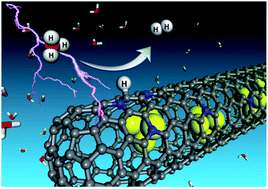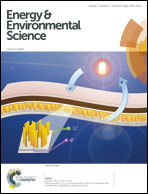Highly active and durable non-precious-metal catalysts encapsulated in carbon nanotubes for hydrogen evolution reaction†
Abstract
Employing a low-cost and highly efficient electrocatalyst to replace Pt-based catalysts for hydrogen evolution reaction (HER) has attracted increasing interest in renewable energy research. Earth-abundant transition metals such as Fe, Co and Ni have been investigated as promising alternatives in alkaline electrolytes. However, these non-precious-metal catalysts are not stable in acids, excluding their application in the acidic solid polymer electrolyte (SPE). Herein, we report a strategy to encapsulate 3d transition metals Fe, Co and the FeCo alloy into nitrogen-doped carbon nanotubes (CNTs) and investigated their HER activity in acidic electrolytes. The optimized catalysts exhibited long-term durability and high activity with only an ∼70 mV onset overpotential vs. RHE which is quite close to that of the commercial 40% Pt/C catalyst, demonstrating the potential for the replacement of Pt-based catalysts. Density functional theory (DFT) calculations indicated that the introduction of metal and nitrogen dopants can synergistically optimize the electronic structure of the CNTs and the adsorption free energy of H atoms on CNTs, and therefore promote the HER with a Volmer–Heyrovsky mechanism.


 Please wait while we load your content...
Please wait while we load your content...